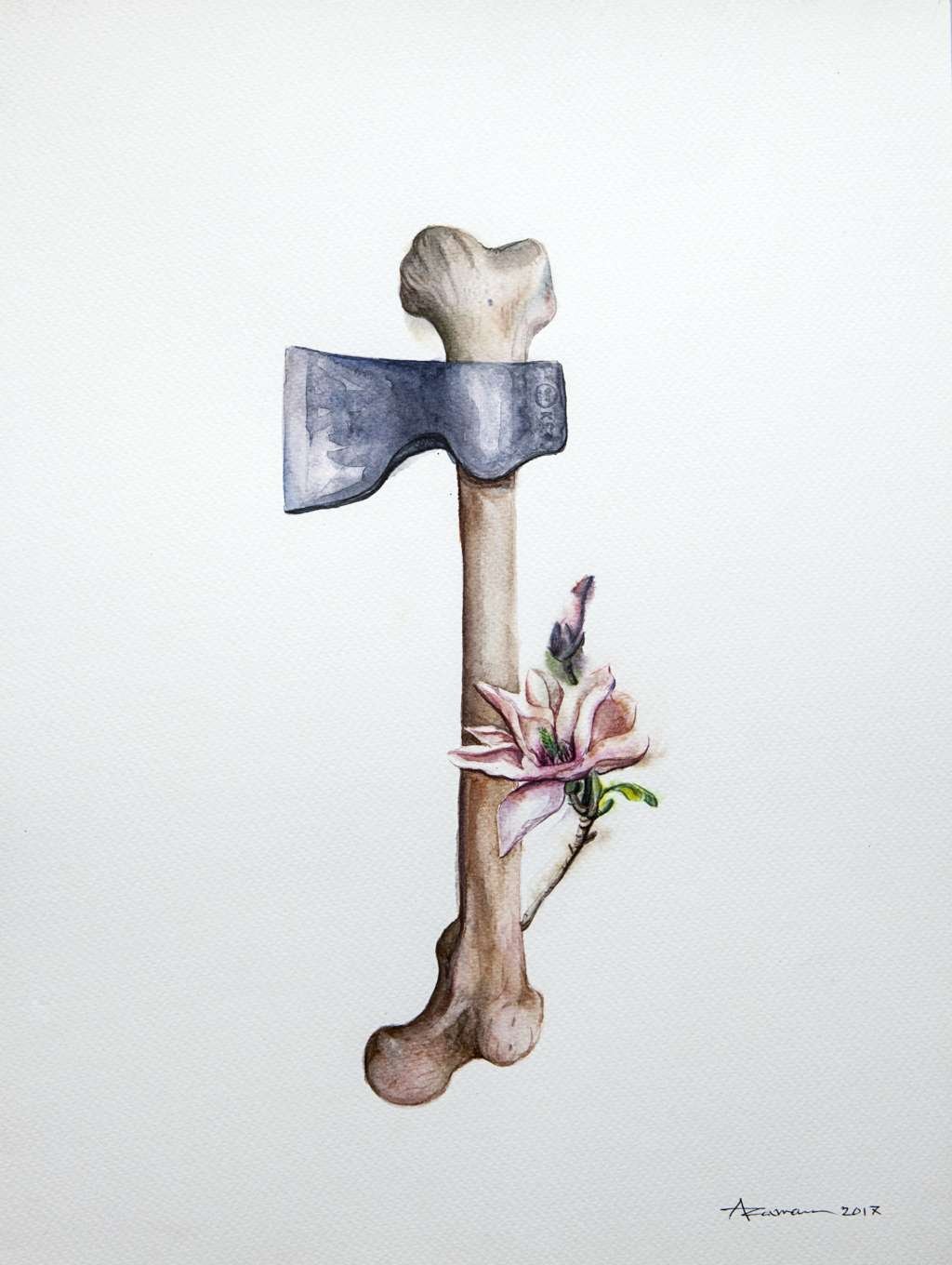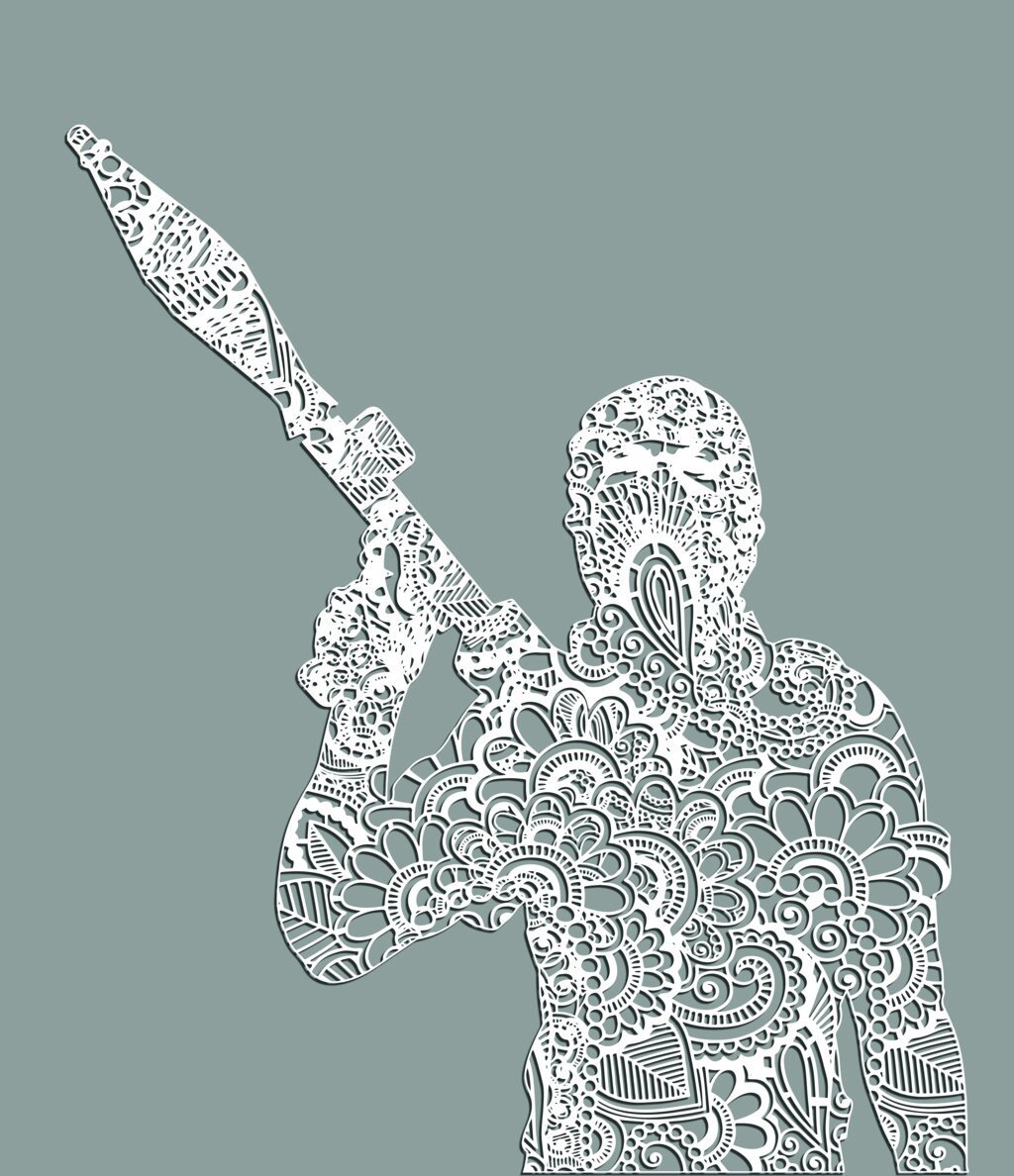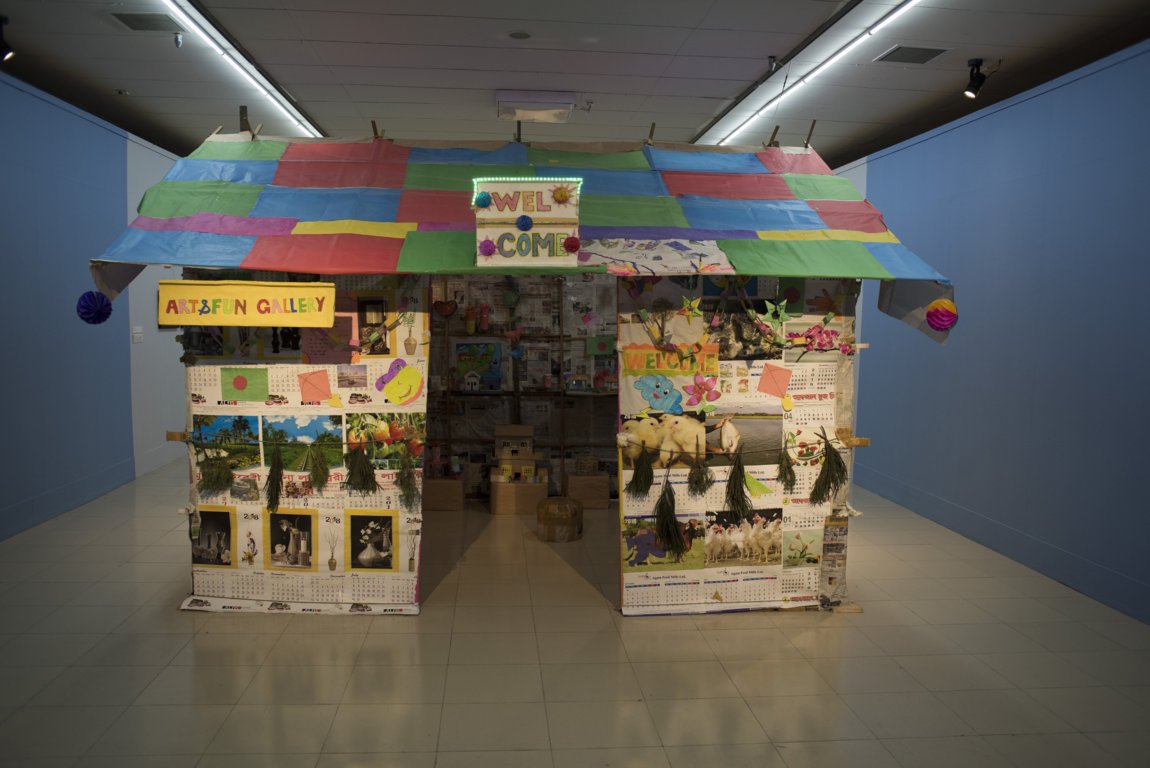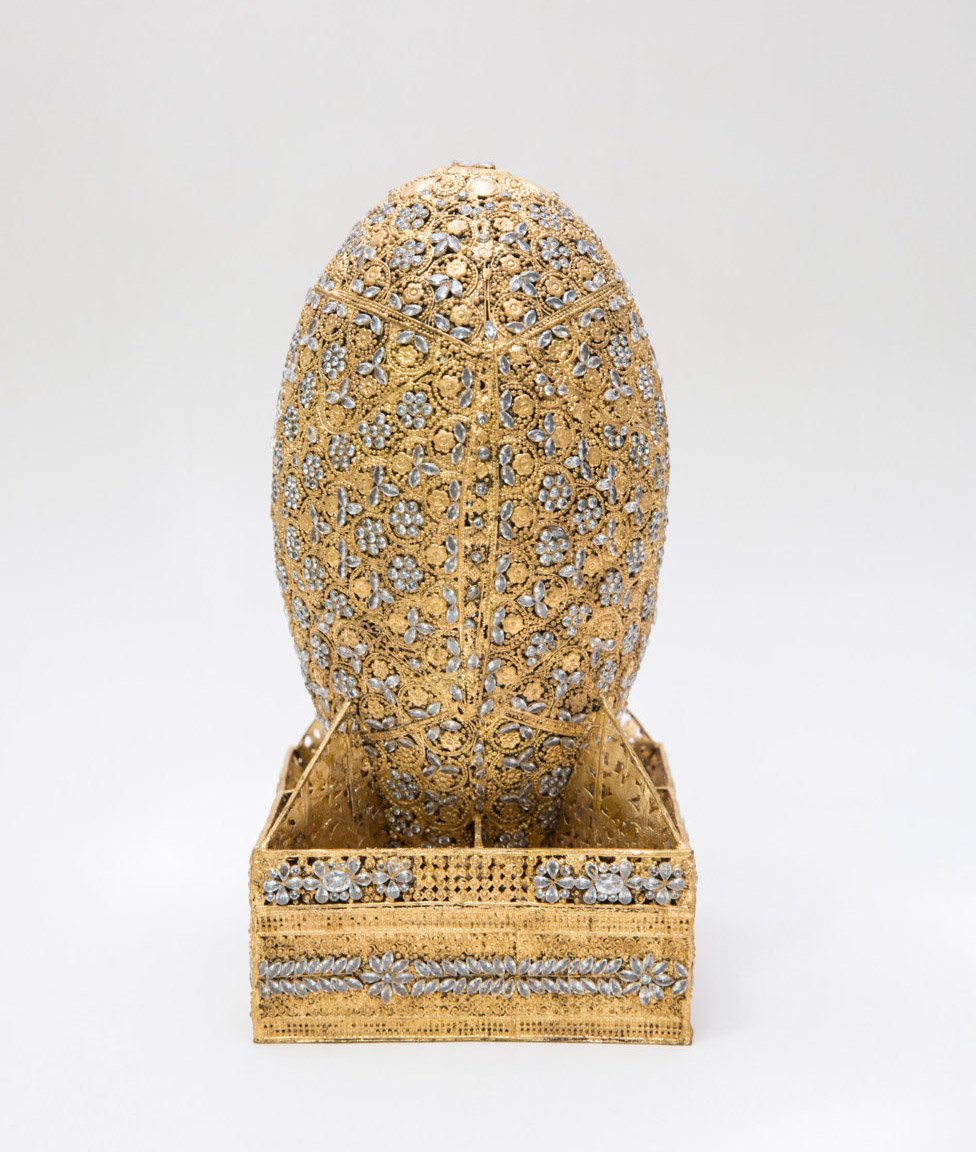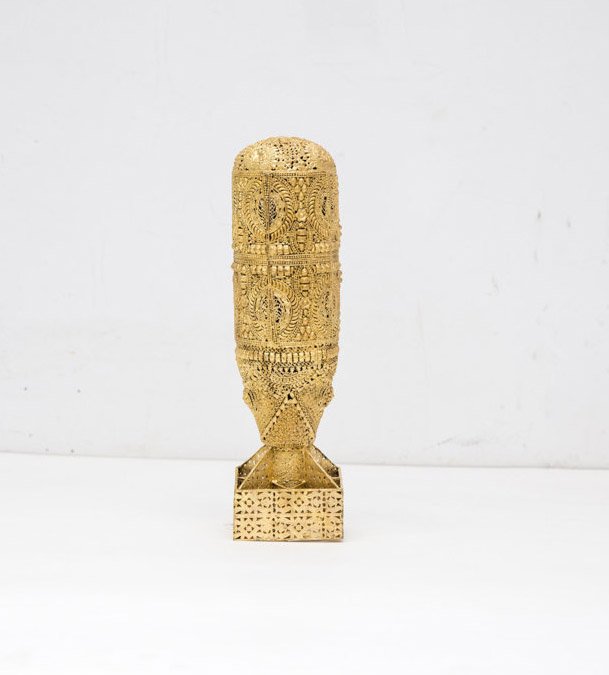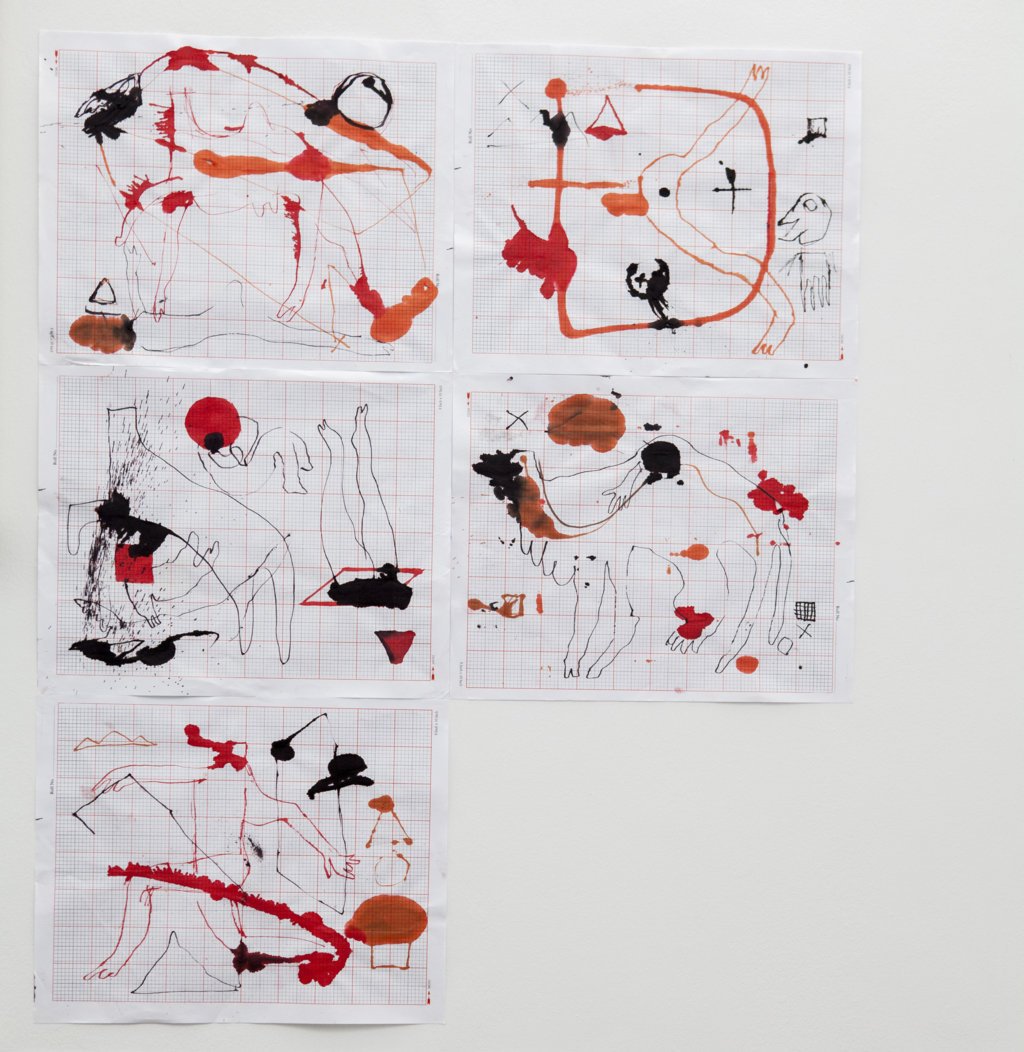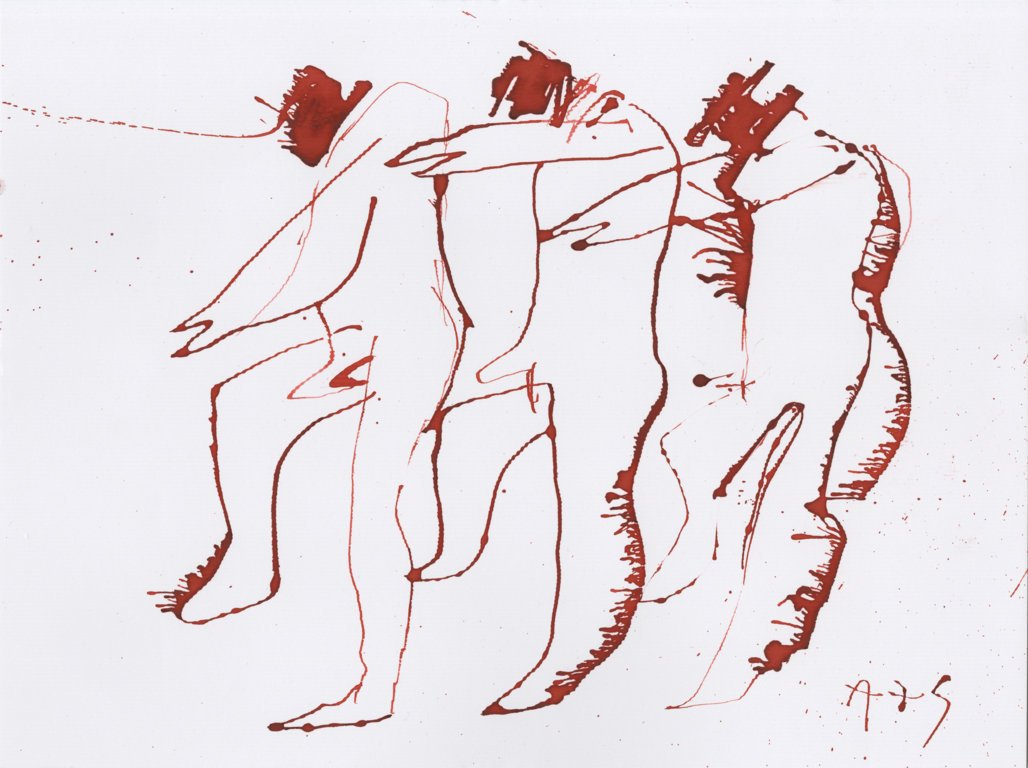
Finger on the Pulse
December 8, 2018 – January 11, 2019 at Akar Prakar, Delhi
How to be relevant, when speaking about the present? Competing truths and parochial histories are enforced by armies of trolling gatekeepers in the great open of our digital age. Doctored narratives resonate through the dark void of echo chambers, while kaleidoscopic realities cram endless feeds of “lives” and “stories”.
Authorities, down to the most obtuse, have spotted the condition; by advancing alternative facts they have dismembered what was left of our social bodies with their cleaving tactics. When indispensable commons as factual truths are being trivialised, when the agora is turned into an arena, a fragmentary discourse might be all that is left to sketch a semblance of reality.
Thus, Finger on the Pulse is organised around fragments. The exhibition showcases work by eight artists from Bangladesh whose age span covers three generations. Their practice entails use of various media, establishing characteristic opinions on social events: there is no shared form or theme which unites them in a linear presentation. Yet a story, fragile and trembling as it might be, emerges from the juxtaposition. Loosely assembled, multifaceted, it has no clear beginning and no definitive end. It stitches facts, emotions and anecdotes that, taken together, might well sketch Bangladesh’s “now”. As Glissant, the great thinker of the difference, once remarked, the unity of a whole can also be found in a series of ruptures and fractures and should not rely on the harmony of congruent forms.
There is something oddly stimulating in placing a finger on one’s pulse. It is the wait, perhaps, the short lapse of time before the next blood wave hits again. Or the rhythm, the eerie regularity of throbbing arteries set on the catch and release movement of the faraway cardiac valves. Artists here are immersed in the same kind of stirring quest. They keep the pulse of events in check, chronicling their realities. Seemingly unconnected, their fragments pencil something wider when considered together; a state-of-affairs which pulsates under our very fingers.
Tanzim Wahab, Curatorial Advisor
Anisuzzaman Sohel | Intimate fear | Watercolour on paper | 16 x 12 in | 2017
Anisuzzaman Sohel | Intimate fear | Watercolour on paper | 16 x 12 in | 2017
Anisuzzaman Sohel | Intimate fear | Watercolour on paper | 16 x 12 in | 2017
Anisuzzaman Sohel | Intimate fear | Watercolour on paper | 16 x 12 in | 2017
Anisuzzaman Sohel | Intimate fear | Watercolour on paper | 16 x 12 in | 2017
Anisuzzaman Sohel | Intimate fear | Watercolour on paper | 16 x 12 in | 2017
Anisuzzaman Sohel | Intimate fear | Watercolour on paper | 16 x 12 in | 2017
Anisuzzaman Sohel | Intimate fear | Watercolour on paper | 16 x 12 in | 2017
Anisuzzaman Sohel | Intimate fear | Watercolour on paper | 16 x 12 in | 2017
Anisuzzaman Sohel | Upside Down (Edition 2 + 1AP) | Aluminium casting | 20 x 9 in | 2016
Anisuzzaman Sohel | The hanger (Edition of 3 + 1AP) | Bronze | 17.5 x 17.5 in | 2016
Anisuzzaman Sohel | Solo Fight | Aluminium casting | 35.4 x 7 in | 2016
Imran Hossain Piplu | Spring in Grey Time 1 | Laser cut on acrylic | 27.5 x 23.5 in | 2018
Imran Hossain Piplu | Spring in Grey Time 2 | Laser cut on acrylic | 26.6 x 18.5 in | 2018
Imran Hossain Piplu | Spring in Grey Time 3 | Laser cut on acrylic | 19.5 x 27.5 in | 2018
Imran Hossain Piplu | Spring in Grey Time 4 | Laser cut on acrylic | 27.5 x 27.5 in | 2018
Imran Hossain Piplu | Spring in Grey Time 6 | Laser cut on acrylic | 15 x 17 in | 2018
Imran Hossain Piplu | Spring in Grey Time 5 | Laser cut on acrylic | 15 x 17 in | 2018
Promotesh Das Pulak | Progression IV - 2/5 (Edition of 5 plus 1AP) | Shola flowers on Fire extinguisher | 18 x 11 x 6 in | 2018
Promotesh Das Pulak | Amity | Iron rod, Iron wires and shola flowers | 41 x 108 x 2.5 in | 2018
Promotesh Das Pulak | Mask 2/3 (Edition of 3 plus 1AP) | Elextrical part, acrylic and shola flowers | 10 x 6 x 7 in | 2018
Marzia Farhana | Equilibrium project | Wood, newspapers, ivory papers | 6 x 7 x 8 in | 2018
Marzia Farhana | Equilibrium project | Wood, newspapers, ivory papers | 6 x 7 x 8 in | 2018
Dilara Begum Jolly | War after war | Needle piercing on photograph | 16 x 21 in | 2018
Dilara Begum Jolly | War after war | Needle piercing on photograph | 16 x 21 in | 2018
Dilara Begum Jolly | War after war | Needle piercing on photograph | 16 x 21 in | 2018
Dilara Begum Jolly | War after war | Needle piercing on photograph | 16 x 21 in | 2018
Dilara Begum Jolly | War after war | Needle piercing on photograph | 16 x 21.7 in | 2018
Dilara Begum Jolly | War after war | Needle piercing on photograph | 16.1 x 21.8 in | 2018
Dilara Begum Jolly | War after war | Needle piercing on photograph | 15 x 11 in | 2018
Dilara Begum Jolly | War after war | Needle piercing on photograph | 15 x 11 in | 2018
Dilara Begum Jolly | War after war | Needle piercing on photograph | 15 x 11 in | 2018
Dilara Begum Jolly | War after war | Needle piercing on photograph | 15 x 11 in | 2018
Dilara Begum Jolly | War after war | Needle piercing on photograph | 15 x 11 in | 2018
Dilara Begum Jolly | War after war | Needle piercing on photograph | 15 x 11 in | 2018
Mahbubur Rahman | Fat Man | Gold leaf on metal | 12 x 6 x 6 in | 2018
Mahbubur Rahman | The Mask | Gold leaf on metal | 9 x 8.6 x 6 in | 2018
Mahbubur Rahman | Mortar Cell | Gold leaf on metal | 12 x 3.6 x 3.6 in | 2018
Mizanur Sakib | War of image | 12 x 10 in approx. | 2018
Abir Shome | Kaparel newsletter | Acrylic on paper | 8.25 x 5.85 in (each) | 2016
Abir Shome | Untitled | Acrylic on paper | 11.5 x 8.15 in | 2016
Abir Shome | Untitled | Acrylic on paper | 11.5 x 8.15 in | 2016
Abir Shome | Untitled | Acrylic on Xerox paper | 7.75 x 5.15 in | 2016
Abir Shome | Untitled | Acrylic on Xerox paper | 7.75 x 5.15 in | 2016
Abir Shome | Untitled | Ink sprayed through syringe on graph paper | 8.85 x 21.5 in | 2016
Abir Shome | Untitled | Ink sprayed through syringe on graph paper | 8.85 x 11 in (each) | 2016
Abir Shome | Let the soft animal of your body love what it loves – 1 | Pen and ink on graph paper | 9 x 11.3 in | 2016
Abir Shome | Let the soft animal of your body love what it loves – 2 | Pen and ink on graph paper | 9 x 11.3 in | 2016
Abir Shome | Let the soft animal of your body love what it loves – 3 | Pen and ink on graph paper | 9 x 11.3 in | 2016
Abir Shome | Let the soft animal of your body love what it loves – 4 | Pen and ink on graph paper | 9 x 11.3 in | 2016
Abir Shome | Untitled | Ink sprayed through syringe on paper | 8.85 x 11.85 in | 2016
Abir Shome | Untitled | Ink sprayed through syringe on paper | 8.85 x 11.85 in | 2016
Abir Shome | Untitled | Ink sprayed through syringe on paper | 8.85 x 11.85 in | 2016
Abir Shome | Untitled | Ink sprayed through syringe on paper | 8.85 x 11.85 in | 2016
Abir Shome | Untitled | Ink sprayed through syringe on paper | 8.85 x 11.85 in | 2016
Abir Shome | Untitled | Ink sprayed through syringe on paper | 8.85 x 11.85 in | 2016
Abir Shome | Feeding my friend | Acrylic on paper | 10 x 9.15 in | 2016
Abir Shome | Feeding my friend | Acrylic on paper | 10 x 9.15in | 2016
Abir Shome | Feeding my friend | Acrylic on paper | 10 x 9.15in | 2016
About Dilara Begum Jolly
Dilara Begum Jolly (b. 1960, Chittagong, Bangladesh) touches upon themes of gender, trauma and the female body. Initially trained as a painter, she has expanded her practice to include various media such as performance, video and sound. Jolly has developed a signature practice of needling on paper and, more recently, photographs – a painstaking process during which she draws motifs on paper, or highlights areas on photographs, through needle prickling.
The work of Dilara Begum Jolly was included in the exhibition, A Beast, a God and a Line (Dhaka Art Summit, 2018). Bengal Foundation has organised several solo exhibitions of Jolly’s work, including Excavating Time (Bengal Gallery of Fine Arts, Dhaka, 2006), Threads of Testimony (Dhaka, 2014) and microtears’/Omorar Akkhan (Daily Star-Bengal Arts Precinct, Dhaka, 2015).
About Mahbubur Rahman
Mahbubur Rahman (b. 1969, Dhaka, Bangladesh) works across a large range of media, from drawing, painting and etching to installation, performance and video art. His work often engages with questions of history, society and the human condition, examining the impact of modernity on contemporary life in South Asia. Rahman is a co-founder of the artist-run collective, Britto Arts Trust, founded in 2002.
His work was shown in Parables, the first Bangladeshi pavilion at the Venice Biennale (Italy, 2011). In 2015, ambitious new work was exhibited in Dust to Dust, (Bengal Foundation, Dhaka, 2015). In 2016 his work, alongside that of his wife, Tayeba Begum Lipi was featured in the exhibition, The Artist as Activist, Broad Art Museum, Michigan State University.
About Imran Hossain Piplu
Born in Dhaka in 1970, Imran Hossain Piplu was trained at the Institute of Fine Art, University of Dhaka, received MFA degree in 1998 in Sculpture. He is one of the founder member and trustee of Britto Arts Trust. He has participated many group exhibition like the Parables: Pavilion of Bangladesh, 54th International Art Exhibition, La Biennale di Venezia, 2011; 14th Asian Art Biennale, Dhaka 2010, Britto New Media Festival, Bengal Gallery of Fine Arts, 2009 and 1mile² Dhaka, at Beauty Boarding in Old Dhaka, 2009; Off the Beaten Path, South Asian Artists’ Exhibition, Bengal Gallery of Fine Arts, Dhaka, 2008 etc. He attended Theertha International Artists’ Workshop, Colombo, Sri Lanka, 2010; Image Manipulation Workshop and Across the Street, Video Art Workshop by Britto Arts Trust, 2009; Britto International Artist’s Workshop 2003, Tepantor Film City, Bhaluka, Bangladesh and so on. He was awarded respectively first and second prizes for his project at Cavalcade Parade in Edinburgh Festival, Edinburgh, Scotland and received Best Award for Sculpture from Institute of fine art, University of Dhaka in 1997.
About Anisuzzaman Sohel
Anisuzzaman Sohel (Born- October 1, 1973) is an emerging multi-disciplinary Visual Artist and Graphic Designer based in Dhaka, Bangladesh. He completed his BFA from the Institute of Fine Arts in 1996. He is noted for his work concerning issues such as the military-industrial complex, consumerism, war and personal fears and other social crises. He has participated in a number of training programs and workshops. These include the Britto 4th International Artists’ Workshop which took place in 2010; and International Design Management Training Courses in Tokyo’s Kenshu Center in 2009. Anisuzzaman Sohel has had his work displayed at both home and abroad, in both solo and group exhibitions. His work has been recognized and awarded. Notably, Anisuzzaman Sohel was presented with the Bangladesh Shilpakala Academy Honourable Mention Award 2017 (Painting) and the Aminul Islam Young Artist Award in 2013. His work has also been chosen to be a part of the permanent collection of the National Museum of Bangladesh and Bangladesh Shilpokola Academy.
About Promotesh Das Pulak
Promotesh Das Pulak born in Sylhet, Bangladesh. Completed his MFA from the Faculty of Fine Art, University of Dhaka. Pulak was trained as a painter; the use of diverse material has played a pivotal role in his artistic practice simultaneously permeating to other media as painting, video, image manipulation, Photography and instillation. He is interested the duality that lies between the organic natural elements and the combat equipment’s. Most of his Sculpture installation is large-scale war equipment assembling by small flowers made out of the stem of ‘Shola plant’ that is used as traditional craft material. Self-portraits are a key feature of Pulak’s oeuvre. In video and image manipulation works the artist incorporates himself within the frame. He exhibited his works in several shows in Bangladesh, USA, Italy, Singapore, Japan, India, Nepal, Dubai, England and many other countries. Promotesh was also represented at the Bangladesh pavilion at the 54th Venice biennale in 2011. He has nominated as an emerging artist-using sculpture at the Prudential Eye Awards in 2016, shortlisted for Samdani Art Awards at Dhaka Art Summit in 2012 and 2014, received fellowship form Aminul Islam Trust In 2007.Pulak showcased his first solo at ‘Aicon Gallery’, New York in 2016. He is a member of Britto arts trust and working as a freelance artist.
About Abir Shome
Abir Shome aka R.Mutt is a Bangladeshi artist, emerged from his very conscious decision & quot; Act of Existing with Art". Born in 1987, Dhaka, he completed his Bachelor in Fine Arts from Dhaka University Faculty of Fine Arts in drawing and painting. Soon after his graduation he was enrolled to Goldsmiths, University of London in BA Fine Arts but after few months he left the course. In 2015 he self-published a book titled ‘In Dhaka or The last days of Sodom. He was a member of the collective OGCJMart from 2011 to 2015. He is a joint recipient of Subir Choudhury Practice Grant 2015, Bengal Foundation. In 2017 Abir was nominated as a fellow to participate in Chobi Mela IX. In 2018, Delhi based gallery Blueprint12 featured Abir’s works in India Art Fair. Abir is a multidisciplinary artist. Drawing, Text, Video, Internet based arts are the major focuses of his practice.
He worked as a graphic designer in Gallery Cosmos and Design agency Head office Communication, he is currently working as a Creative Visualizer in Bengal Arts Programme.
About Marzia Farhana
Marzia Farhana (b. 1985, Dhaka, Bangladesh) is a visual artist based in Dhaka, Bangladesh. She studied at the Faculty of Fine Arts, University of Dhaka and completed her MA in Fine Art from Central St Martins, University of the Arts London, where she was awarded a prize for Innovation (2014). She has developed an individual idiom in different media including painting, multi-media installation, assemblage and video installation. Her works have been featured at a number of group exhibitions including 15th Berger Young Painter Arts Competition Exhibition, Dhaka (2010); Young Dhaka, Zainul Gallery, Faculty of Fine Arts, University of Dhaka, Dhaka (2011); Only God Can Judge Me (OGCJM), Dhaka (2012). She is one of the participant artist in the exhibition ‘Missing One’ curated by Nada Raza, Tate Modern), Dhaka Art Summit 2016 and Oslo, Norway (2017). Moreover, her work exhibited in a group show ‘You Cannot Cross the Sea Marely Staring at the Waves’ at Krinzinger Projekte, Vienna in September (2016).She participated in Khoj International Workshop in Goa, India (2017) and in Kathmandu Triennale, 2017 (Upheavals, Upheavals, Bangladesh now, as seen by eight artists), Nepal. She was short listed and exhibited in Samdani Art Award, Dhaka Art Summit, 2018. Recently she participated in group exhibition, Museum of Contemporary art Barcelona (MACBA), Spain and will show her work in Kochi-Muziris Biennale 2018, India.
About Mizanur Rahman Chowdhury (Sakib)
With an MFA in Printmaking from the University of Dhaka, Mizanur Rahman Chowdhury (b.1981, Noakhali, Bangladesh) interdisciplinary practice includes the manipulation of everyday objects into installation-cum-assemblages to instigate fresh material interaction and new contextual readings. His artistic practice also explores through other media such as Video, Collage, Sculpture, Performance and Photography. As a winner of the Samdani Art Award 2018, Chowdhury will go onto a six-week residency at Delfina Foundation in London, supported by Samdani Art Foundation and Delfina Foundation. Also received a prize in the form of curatorial mentorships from the New North and South Network. His work has been shown in various group exhibitions such as, Only God Can Judge Me (OGCJM, 2012) Dhaka, ‘How Are You?’ at Community space Litmaus gallery, South Korea(2012), ‘Mourn’ a process based art show, Dhaka Art Centre (2013), Self Identity, National Museum of Bangladesh, 2016 and Samdani Art Award, Dhaka Art Summit, 2018.












